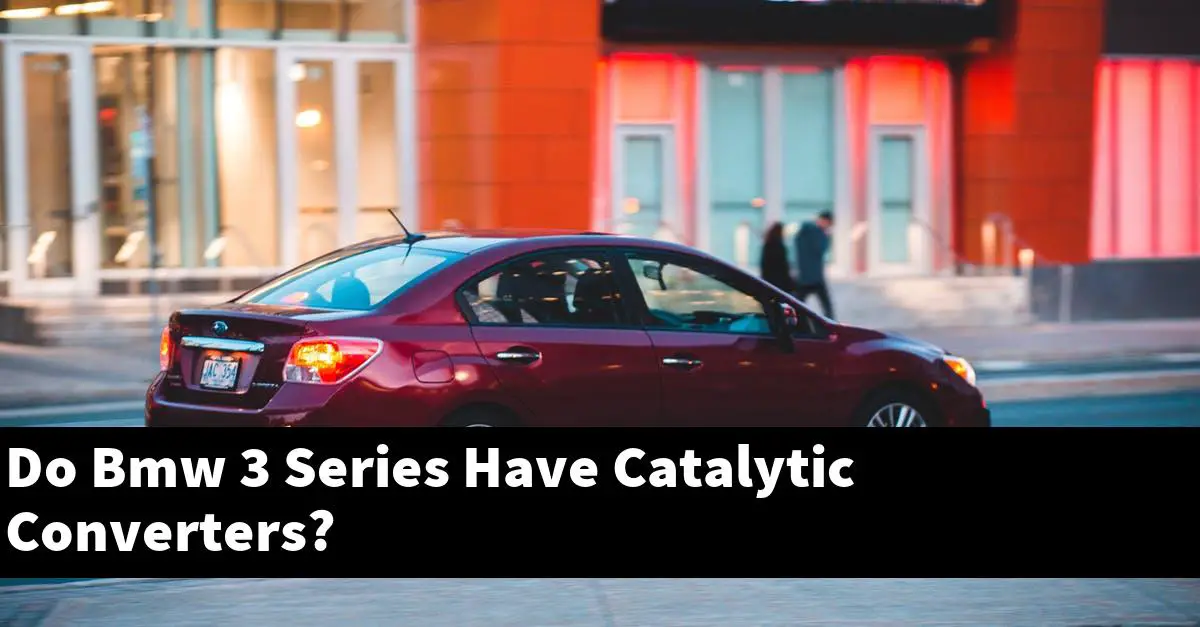The BMW 3 Series is a compact executive car manufactured by the German automaker BMW since May 1975. It is the successor to the 02 Series and has been produced in seven different generations. The third generation of the 3 Series was produced from 1987-1991 and was equipped with a catalytic converter.
How many catalytic converter does a BMW have?
A catalytic converter is a device that reduces the harmful emissions from a car’s exhaust. A BMW typically has three converters.
Can a BMW run without a catalytic converter?
In general, no. A catalytic converter is required on a BMW to meet emissions standards in the United States.
Manufacturers in other countries may or may not require a catalytic converter, depending on the country’s emissions standards.
Does BMW have a catalytic converter?
BMW does not have a catalytic converter.
How do three-way catalytic converters work?
Three-way catalytic converters (TWCs) are a type of pollution control device found on gasoline engines. They are made up of a number of catalytic converters, each of which is designed to convert harmful pollutants (such as NOx, HCs, and CO) into less harmful substances (such as water vapor, carbon dioxide, and nitrogen).
The first stage of the TWC is a “primary” catalytic converter. This converter is designed to break down the hydrocarbons (Hs) and carbon monoxide (CO) into molecules that are too large to be able to enter the “secondary” and “TWC” catalytic converters.
The secondary converter is designed to break down the smaller molecules into elements that can be eliminated from the exhaust. The tertiary converter is designed to break down the elements into molecular oxygen (O2).
The primary and secondary converters are housed in the same cylinder, while the tertiary converter is housed in a separate cylinder. The primary and secondary converters are connected by a “flow crossover pipe”, while the tertiary converter is connected by a “flow return pipe”. The flow crossover pipe allows the pollutants to be exchanged between the converters, while the flow return pipe allows the exhaust gas to be returned to the engine.
Three-way catalytic converters are beneficial because they are able to convert more pollutants into less harmful substances than traditional two-way catalytic converters. They are also beneficial because they are able to reduce the amount of NOx emitted from the engine.
Why do catalytic converters have to be close to the engine?
Catalytic converters are designed to remove harmful substances from the exhaust gases from an engine. The converters are located near the engine to maximize the efficiency of the process.
What is a catalytic converter in a BMW?
A catalytic converter is a device that reduces the pollutants in the exhaust from a car. The converter works by transforming the pollutants into less harmful substances.
Which cars are most likely to have catalytic converter stolen?
It depends on a variety of factors, including the make and model of the car, where it was parked, and the time of year. However, a number of factors that may increase a car’s susceptibility to being stolen include its size and value, as well as its location.
How many catalytic converters does a BMW 325i have?
A BMW 325i typically has two catalytic converters. These are located in the exhaust system and are responsible for reducing harmful emissions from the engine.
Where are catalytic converters placed in a car?
The catalytic converter is a device that converts the harmful pollutants in the exhaust from the engine into less harmful gases. Catalytic converters are usually placed near the exhaust pipe.
Conclusion
Yes, all BMW 3 Series cars have catalytic converters. Catalytic converters are devices that remove harmful pollutants from exhaust gases before they are released into the atmosphere.


